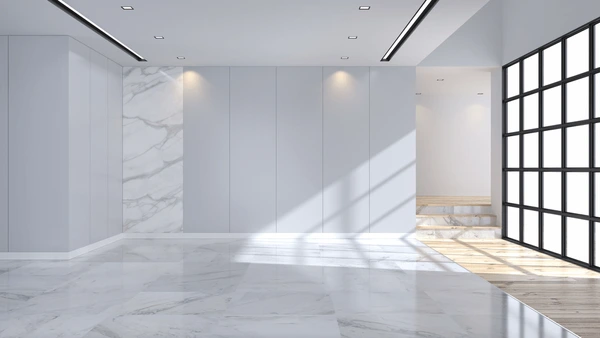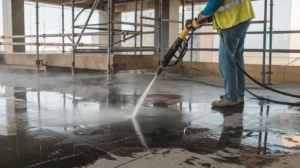When considering home renovations, particularly in the kitchen or bathroom, marble countertops often come up as a luxurious choice. But many homeowners wonder, Is marble expensive?. This question is essential for budgeting and understanding whether this elegant natural stone is worth the investment.
In this article, we will delve into the average cost of marble countertops, why marble can be so costly, the factors affecting its price, how to reduce the cost, and how it compares with other materials.
Average Cost of Marble Countertops
When considering marble for your countertops, it’s essential to understand the average cost. Marble countertops generally range between $40 and $100 per square foot. However, this price can vary widely based on the type of marble and its origin.
For example, high-end varieties like Calacatta or Carrara marble can cost significantly more, sometimes reaching up to $200 per square foot.

Why Is Marble So Expensive?
Marble’s high cost is attributed to several factors. Firstly, the quality and rarity of certain marbles, such as Carrara or Calacatta, drive up prices due to their unique veining and limited availability. Extracting marble from quarries is a labor-intensive process, and transporting the heavy slabs, especially from overseas, adds significant costs.
Additionally, the processing of marble—including cutting, polishing, and finishing—requires specialized equipment and skilled labor, further increasing the expense. Finally, the strong demand for luxury marble in high-end design projects contributes to its elevated price.
What Factors Affect the Cost of Marble?
Several factors can affect the cost of marble countertops:
Type of Marble
The type of marble significantly affects its cost. For example, white marble, prized for its timeless elegance, often comes at a higher price compared to other colors. The rarity and demand for specific marble types also influence their cost. Therefore, selecting a marble type can impact your overall budget.
Size and Thickness
Larger slabs and thicker marble pieces are more expensive due to higher material costs and processing requirements. Custom sizes and thicknesses further drive up the price as they often require specialized cutting and finishing. The overall cost increases with the size and thickness due to the increased quantity of marble and the complexity of handling it.
Edge and Surface Treatment
Marble countertops can feature different edge profiles and surface treatments, ranging from simple to elaborate designs. Common edge profiles include rounded, beveled, or ogee, while surface treatments might involve polishing, honing, or texturing.
Intricate edge designs and specialized surface treatments often increase the overall cost. The choice of profile and treatment can affect both the aesthetic appeal and functionality of the countertop. Higher complexity generally leads to higher prices.
Location
The cost of marble can differ based on your location. If you live in an area where marble is scarce, additional costs for transportation and handling can raise the price. Local availability plays a key role in determining marble costs. In regions with limited access, these extra expenses can significantly impact the overall price.
How to Reduce the Cost?
To manage the cost of marble while still enjoying its elegance, consider several strategies. Opt for less expensive types of marble, as high-end varieties can be costly. Using marble as an accent rather than covering entire areas can help you enjoy its luxury at a lower price.
Look for marble remnants or offcuts from suppliers, which can be a budget-friendly option for smaller projects. Don’t shy away from negotiating with suppliers or contractors, as discussing your budget might lead to discounts or better deals. Additionally, choosing a honed finish instead of a polished one may help reduce costs.
Comparing Marble With Other Materials
When considering countertop materials, it’s useful to compare marble with other options:
Granite
Granite countertops are frequently compared to marble ones. Typically, granite is more affordable than high-end marble, but prices can vary based on quality. One of granite’s standout features is its exceptional durability. It resists scratches and chips better than many other materials.
Additionally, granite has impressive heat resistance, making it ideal for kitchen use. While both granite and marble offer unique benefits, granite’s durability and cost-effectiveness often make it a preferred choice.
Quartz
Quartz countertops are a popular choice due to their engineered consistency in appearance. They are made from crushed quartz mixed with resin, which gives them a uniform look. Generally, quartz countertops are pricier than some marble options but can be less costly than high-end marble varieties.
This makes quartz a versatile option for those seeking both style and affordability. It is durable and requires less maintenance compared to natural stones. Overall, quartz offers a balance between cost and performance.
Granite vs Marble
Granite and marble differ mainly in cost and appearance. Granite is typically more affordable than marble, making it a popular choice for budget-conscious homeowners. Marble, though pricier, offers a unique and luxurious aesthetic with its distinctive veining and color variations.
The choice between them often comes down to personal preference and budget. Granite’s durability and low maintenance make it ideal for high-traffic areas, while marble’s elegance suits more decorative uses. For some, the higher cost of marble is worth it for its classic beauty and timeless appeal.
Quartz vs Marble
Quartz is often more affordable than high-end marble but usually pricier than granite. Quartz surfaces are engineered and can be less costly compared to luxurious marble options. Marble, on the other hand, is valued for its unique natural beauty and elegance.
Its distinct veining and timeless appeal make it a sought-after material despite its higher price. For those seeking premium aesthetics and individuality, marble remains a top choice. Quartz provides a balance between cost and durability, while marble offers unmatched natural allure.
Conclusion
In summary, marble can be expensive, particularly for high-end varieties and with the added costs of extraction, transportation, and finishing. However, its beauty and elegance make it a sought-after material for luxury countertops.
By understanding the factors that affect marble costs and exploring ways to reduce expenses, you can make an informed decision about whether marble is the right choice for your home.
Whether you’re comparing marble with granite or quartz, each material has its own pros and cons. Marble’s price can be high, but for many, the investment in this classic and luxurious stone is well worth it. Transform your space with our expert services contact us if you have any query or want to take our services.






